| Content | Rupert Neve Designs RNHP is a state-of-the-art headphone amplifier. Now when Mr. Neve turns his attention to anything, you know it's going to be good. And spectacularly so. What the RNHP delivers is reliable, reference-grade amplification for any pair of headphones. Based on the headphone amp in the RND 5060 Centerpiece, the dedicated 24-volt design is spec'd with calibrated +4dBu Line, RCA, and 1/8" stereo inputs. Everything's housed in a road-tough, VESA-mountable steel chassis. The unit's effortless sonic performance and the ability to drive virtually any 'phones without compromise let you perform, mix, and savor your music with stunning clarity.
Rupert Neve Designs RNHP at a Glance:
- Unerring accuracy for better performances
- The benefits of near-zero-ohm output impedance
Unerring accuracy for better performances
You know you perform your best when your cans sound great - and that's where the RNHP can make a huge difference. Many integrated headphone amps are plagued with a non-linear frequency response, as well as noise, distortion, and skimpy headroom. To some, these units' lackluster sonic performance may seem "close enough for rock 'n' roll," however at Sweetwater, we believe there is the performer's subconscious response to consider. After all, if you're not inspired by what you're hearing, your performance will suffer.
The benefits of near-zero-ohm output impedance
Rupert Neve Designs spec'd the RNHP with near-zero-ohm output impedance to minimize frequency-based reactive-load impedance shifts - a problem unique to headphone monitoring. This ensures accurate sound reproduction, which is obviously important if you need to trust the decisions you make with headphones. You'll find the RNHP's unerring accuracy beneficial when you're using just one set of cans, and also when you're comparing a mix on multiple pairs of headphones.
Rupert Neve Designs RNHP Features:
- Reliable, reference-grade amplification for any pair of headphones
- Based on the headphone amp in the RND 5060 Centerpiece
- Effortless sonic performance
- The ability to drive virtually any headphones
- Dedicated 24-volt design
- Calibrated +4dBu Line, RCA, and 1/8" stereo inputs
- Near-zero-ohm output impedance minimizes frequency-based reactive-load impedance shifts
- Road-tough, VESA-mountable steel chassis
| Rupert Neve Designs R6 500 Series chassis is a 6-space, steel rack enclosure that sports XLR, TRS, and DB-25 I/O to work with any studio setup. To ensure your modules are properly powered, the R6 has 150% of the required current, so you'll never be underpowered. It also has a built-in LED display to show current consumption and a double-shielded internal power supply that won't add any interference or unwanted noise to your signal. Rupert Neve is an audio legend. So you know when he designs a 500 Series chassis, it's top-shelf, all the way. Give your 500 Series modules the pampering they deserve with the Rupert Neve Designs R6 500 Series rack.
Genius in the details
With the Rupert Neve Designs' RND R6, there's genius in the details. The R6's double-shielded internal power supply was meticulously designed to avoid magnetic induction in any of its module slots. The power supply is a Switchmode type, and great care was taken to ensure that the frequencies are considerably outside the audible band. There's an internal jumper configuration that makes it easy to link slots in pairs. It's even fitted with variable-position screw holes that slide to accommodate modules that are slightly out-of-spec, which makes the insertion of modules quick and easy. Trust Sweetwater: when it comes to 500 Series racks, the RND R6 is as good as it gets.
Rupert Neve Designs RND R6 500 Series Rack Features at a Glance:
- Supplies 150% of the required current
- LED current consumption meter displays available current
- XLR, TRS, and DB-25 I/O
- Variable-position screw holes make for quick and easy module insertion
- Double-shielded internal power supply designed to avoid magnetic induction in module slots
- Switchmode PSU with frequencies considerably outside audible band
- Internal jumper configuration lets you link slots in pairs
|
NAIM UNITI NOVA ALL-IN-ONE MUSIC PLAYER
Uniti Nova is proof that an all-in-one player can deliver audiophile quality. Whichever source you choose, your music will be transformed into a stunning sonic experience. The reference player in the range, Uniti Nova has been configured to offer the very best solution that we can implement in a single-box, compact enclosure. All the available space has been used to provide 80 watts per channel of Class A/B amplification capable of driving the most demanding loudspeakers – detail and depth you’ll hear in every note, riff and chorus.
Uniti Nova really lives up to its name with some outstanding new technology which really sets it apart from the rest of the range. Its circuitry features the highest quality discrete components, a massive toroidal transformer for an exceptional sound, superior isolation, Naim's new signature volume control, more inputs than you can shake a stick at and an 80 watt power per channel power amplifier to boot. Uniti Nova is as good as an all-in-one player can get.
Specifications
Connectivity
Audio Inputs
2 x Optical TOSLink (up to 24bit/96kHz)
2 x Coaxial RCA (up to 24bit/192kHz, DoP 64Fs)
1 x BNC (up to 192kHz, DoP 62Fs)
1 x HDMI ARC
2 x RCA
2 x 5-pin DIN
2 x USB Type A socket (front and rear)
SD Card
Audio Outputs
1 x Stereo power amplifier
1 x RCA sub/pre output
1 x 3.5mm headphone jack
Amplifier Output: 80 W per channel into 8 ohm
Dimensions (HWD): 95mm x 432mm x 265mm
Weight: 13 kg
| Designed for musicians and performers who demand mobility without compromising audio quality, the HP2 personal headphone amplifier is a great choice for driving wired in-ear monitors (IEMs), as well as headphones. PreSonus HP-series headphone amplifiers have long been popular for their loud, clean, clear sound and roadworthy built quality. The new HP2 delivers these qualities in an easily affordable, stereo device so you'll hear every note and beat clearly wherever your music takes you. | The M3si integrated amplifier produces high quality sound, has an extensive range of useful inputs and offers high reliability, compact size and a fair price. With its strong 85 watts per channel, the M3si will drive a huge variety of appropriate loudspeakers. It has inputs for phono (MM), 4 line inputs and USB ‘B’ up to 24bit 96 kHz.
The M3si’s sound is effortless, clear and sweet. It projects wide and deep images and has plenty of power to deliver excellent dynamic range.
The M3si is unconditionally stable and will drive any appropriate loudspeaker with ease.
Although it is Musical Fidelity’s lowest price amplifier, it embodies our hallmark values of uncoloured, stress-free sound, outstanding technical performance and great value for money.
M3si In Brief
- 85WPC
- Excellent technical performance
- Preamp output
- Unconditional stability, will drive any loudspeaker
- Wide range of useful inputs
- including asynchronous USB and MM phono
- Excellent build quality and convenient size
Specifications
Power output: 85 W per channel into 8 ohm
THD(+ noise): <0.014 % typical, 20 Hz to 20 kHz
Signal to Noise Ratio: >98 dB ‘A’-weighted
Frequency Response: +0, –0.1 dB, 10 Hz to 20 kHz
Inputs: 4x Line Level RCA / Phono, 1x USB type ‘B’ connector - Asynchronous data stream at up to 24-bit/96kHz, 1x MM Phono input
Phono
Sensitivity (nominal): 3 mV (suitable for cartridges giving 1.5mV or more including high output MC types)
Signal / noise ratio: >70 dB ‘A’-weighted
Input impedance: 50 k ohm
Frequency response: RIAA/IEC ±1 dB, 20 Hz to 20 kHz
Dimensions - WxHxD (mm): 440 x 100 x 400
Weight (unpacked / packed): 9.2 kg/ 13 kg | The Shelford Channel is built around Rupert Neve’s first new transformer-gain, class-A microphone preamplifier in over 40 years, a “best-of-the-classics” inductor EQ section, a tone-packed diode bridge compressor, the power of variable Silk saturation, a new dual-tap transformer output stage, and twice the operating voltage of vintage designs.
The Input Stage and Transformer Gain Mic Pre
Like Rupert’s designs from his time in Little Shelford , the Shelford Channel’s preamplifier uses a directly-coupled transformer input with gain provided by the custom transformer itself – a first in over 40 years for Rupert Neve. This new custom-designed input transformer, along with its careful integration with the surrounding class-A circuitry, is critical to the Channel’s bold and instantly recognizable character.
Conveniently, the Direct Input uses the same topology as the best-selling RNDI Active Transformer Direct Interface, providing astonishing clarity for high-Z instrument signals, with unparalleled low-frequency response and an incredibly smooth high end.
What is Silk?
The Silk & Texture circuit on the Shelford Channel allows you to fine-tune the amount (and type) of harmonic content in the output stage. This means your signal can be adjusted from quite transparent to settings that produce nearly 10x the amount of sonic color as Rupert’s vintage modules – and in two very unique modes. No matter what sound you’re looking for, Silk can help get you there.
The Dual Tap Transformer Output
Complementing the Silk circuit is the custom-designed output transformer, which uses Rupert Neve Designs’ unique dual-tap output topology. This offers both full-headroom (+26dBu) and -6dB outputs, allowing the engineer to drive the unit fully into classic transformer saturation without clipping converters and other devices later in the chain.
The “Best-Of” EQ
The Shelford Channel’s 3-band, custom-tapped inductor EQ was inspired by our favorite elements of Rupert’s vintage EQ designs. The low frequency band is designed to produce a creamy, resonant bass response similar to a vintage 1064 – but unlike the vintage modules, the LF band on the Shelford Channel can be used as either a shelf or a peak filter, adding punch, dimension, and control to your low end.
The midrange band is based on that of the 1073, ideal for sweetening vocals and instruments while bringing them forward in a mix, and its proportional “Q” response makes it well-suited for minimizing problematic frequencies. The high frequency band is a hybrid vintage / modern design, blending inductor circuitry with capacitor-based topologies to achieve vintage tones with enhanced control, with the shelf / peak corner switchable between 8K or 16K.
The Diode Bridge Compressor
Like the Inductor EQ and Transformer Gain microphone preamp, the Diode Bridge Compressor in the Shelford Channel is based on the same topologies found in Rupert’s vintage designs – but refined & adapted for the modern engineer.
What is diode bridge compression? Where the VCA compressor found in the Master Buss Processor provides unmatched clarity, the weighty, harmonically rich tonality of diode bridge compression can be essential in pushing key sources like vocals, electric guitars, bass and drums to the forefront of a mix.
By understanding the limitations of vintage units like the legendary 2254, painstaking effort was taken to reproduce the unique tone of these classics while improving the noise floor & accuracy, expanding inflexible time constants, adding full wave sidechain detection for improved dynamic response, and widening the range of threshold and ratio controls.
Delivering the powerful sound of these iconic designs with enhanced flexibility for the modern age, the Shelford’s diode bridge compressor is a dynamic tool equipped to make a statement on virtually any mix or track.
MIC PREAMP
INPUT IMPEDANCE
2200 Ohm
MAXIMUM INPUT
- +21.5 dBu from 150 Hz to 22 kHz
- +8 dBu 20 Hz to 22 kHz
NOISE
- Un-weighted, 22 Hz-22 kHz, source impedance 150 Ohm balanced.
- Main Out @ unity gain -100.9 dBu
- -6 dB Out @ unity gain -106.6 dBu
- +30 dB gain (Main Out) -91.37 dBu
- +66 dB Gain (Main Out) -64.1 dBu
- Equivalent Input Noise -121.37 dBu
FREQUENCY RESPONSE
+/-0.25 dB from 17 Hz to 45 kHz
DIRECT INPUT
MAXIMUM INPUT
8 dBu @ 20 Hz to 120 kHz
NOISE (MAIN OUTPUT)
-100 dBu (22 Hz to 22 kHz)
LINE INPUT
MAXIMUM INPUT LEVEL
+30.5 dBu 20 Hz to 30 kHz
TOTAL HARMONIC DISTORTION AND NOISE
- @ 1 kHz, +20 dBu output level, no load: Better than 0.002%
- @ 20 Hz, +20 dBu output level, no load: 0.05% Typical (2nd and 3rd harmonic)
NOISE (MAIN OUTPUT)
Un-weighted, 22 Hz - 22 kHz, source impedance 40 Ohm balanced, no load.
-101.1 dBu
FREQUENCY RESPONSE
+/- 0.25 dBu from less than 10 Hz to 110 kHz
-0.32 dB @ 120 kHz
MAXIMUM OUTPUT LEVEL
+26 dBu @ 16 Hz to 20 kHz
TOTAL HARMONIC DISTORTION AND NOISE WITH SILK ENGAGED
RED
- MIN TEXTURE @ 100 Hz, +20 dBu input level, no load: 0.0131%, mostly 3rd harmonic (typical)
- MAX TEXTURE @ 100 Hz, +20 dBu input level, no load: 1.66%, mostly 2rd harmonic (typical)
BLUE
- MIN TEXTURE @ 100Hz, +20 dBu input level, no load: 0.0079%, mostly 3rd harmonic (typical)
- MAX TEXTURE @ 100Hz, +20 dBu input level, no load: 0.941%, mostly 2rd harmonic (typical)
HIGH PASS FILTER
- Continuously variable swept frequency from 20 Hz to 250 Hz.
- Slope: 12 dB/Octave
EQ NOISE
Un-weighted, 22 Hz-22 kHz: -92 dBu
SIGNAL PRESENT
Illuminates GREEN when input stage signal level reaches -20 dBu
OVERLOAD INDICATOR
Illuminates RED when input stage signal level reaches -23 dBu
DIODE BRIDGE COMPRESSOR
- NOISE (BW 22 Hz – 22 kHz)
- 0 dB Makeup Gain: -84.5 dBu
- +20 dB Makeup Gain: -64.2 dBu
TIME CONSTANTS
- Measurements taken represent full range achievable between 1.5:1 Ratio and 8:1 Ratio setting.
- 0 dBu I/P 1kHz Burst Tone used for all recorded measurements.
- Fast (TC1): Attack 180µS — 1.8mS // Release 100mS – 150mS
- MedFast (TC2): Attack 750µS – 5.25mS // Release 160mS – 250mS
- Med (TC3): 2.7mS – 18mS // Release 350mS – 525mS
- MedSlow (TC4): 4.6mS – 38mS // Release 600mS – 1 S
- Slow (TC5): 11mS – 72.5mS // Release 800mS – 1.25 S
- Auto (TC6): 5.75mS – 35.5mS // Release T1 400mS – 850mS, T2 TBD
- “Fast” Mode Multiplier: Modifies aforementioned TC’s by 70% of original value
PRODUCT DIMENSIONS
19” (48.3 cm) x 10.5” (26.7 cm) x 1.75” (4.4 cm) |


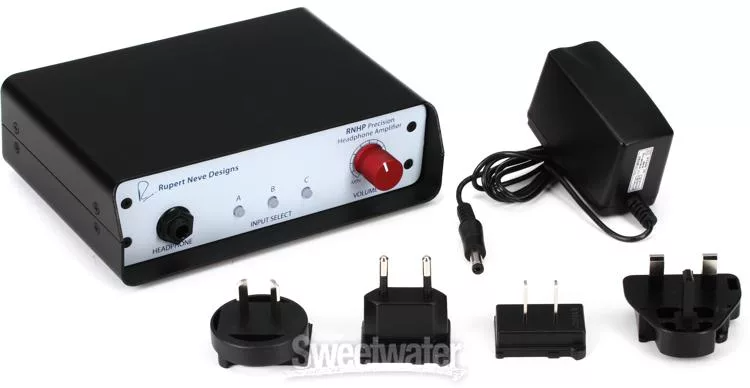
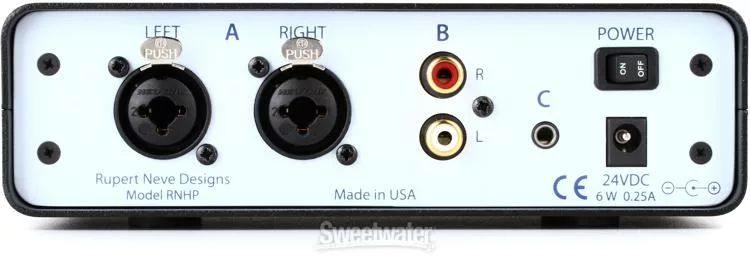









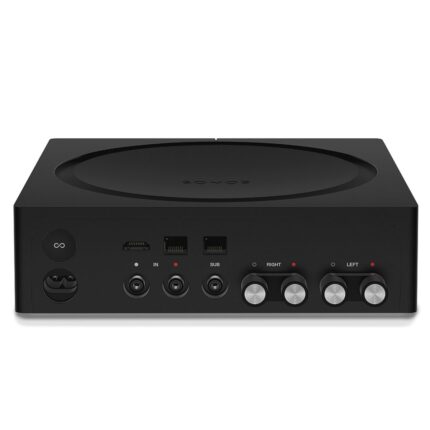
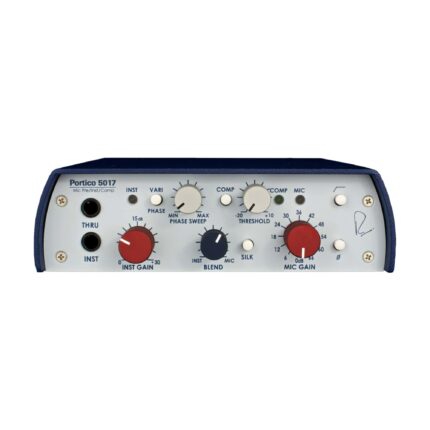
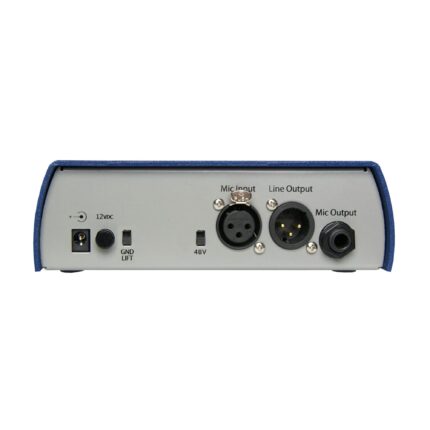





Reviews
There are no reviews yet.